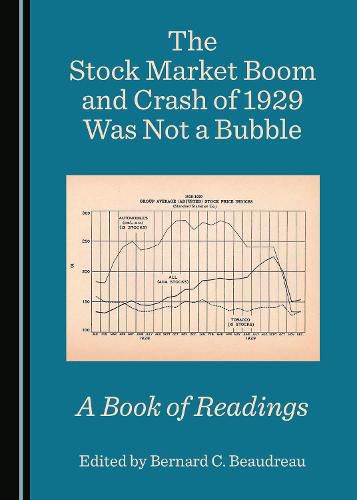Readings Newsletter
Become a Readings Member to make your shopping experience even easier.
Sign in or sign up for free!
You’re not far away from qualifying for FREE standard shipping within Australia
You’ve qualified for FREE standard shipping within Australia
The cart is loading…






In the aftermath of the stock market crash of 1929, Yale University Economics Professor Irving Fisher remained steadfast in his view that the boom in prices had been warranted, pointing to the myriad innovations of the 1920s, including the introduction of the electric unit drive and utility-supplied power. Dismissed by most, this view has since given way to Alan Greenspan’s view of irrational exuberance. This book presents a series of contemporary and period writings which rehabilitate the fundamentals view, showing why Irving Fisher was right. Whereas Fisher was unable to provide a convincing narrative for the crash, these writings point to the Hoover Administration’s tariff initiative, the Smoot-Hawley Tariff Bill, as the key element which contributed to both the boom and the crash.
$9.00 standard shipping within Australia
FREE standard shipping within Australia for orders over $100.00
Express & International shipping calculated at checkout
In the aftermath of the stock market crash of 1929, Yale University Economics Professor Irving Fisher remained steadfast in his view that the boom in prices had been warranted, pointing to the myriad innovations of the 1920s, including the introduction of the electric unit drive and utility-supplied power. Dismissed by most, this view has since given way to Alan Greenspan’s view of irrational exuberance. This book presents a series of contemporary and period writings which rehabilitate the fundamentals view, showing why Irving Fisher was right. Whereas Fisher was unable to provide a convincing narrative for the crash, these writings point to the Hoover Administration’s tariff initiative, the Smoot-Hawley Tariff Bill, as the key element which contributed to both the boom and the crash.